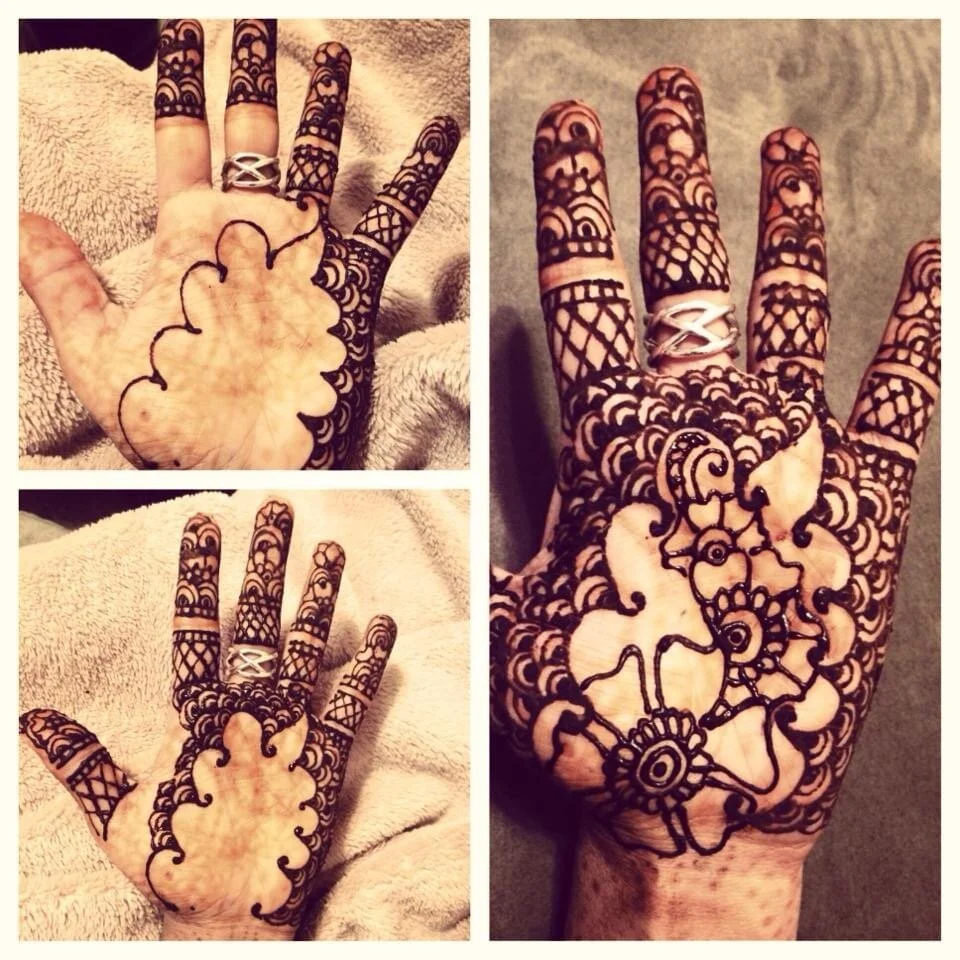Once upon a time, I was a shadow artist.
My family immigrated to the USA when I was three and arts were not encouraged in our home, let alone as a profession. So I began to watch the art world from the sidelines and often, from the audience. I started attending art talks and exhibitions in high school. As college peers were clubbing, I was strolling through museums and attending festivals. When I traveled in my 20s, I began to collect art. Here and there, I would pick up a cone of henna paste to adorn my friends with temporary body art. After all, it was a familiar cultural item that I had encountered since childhood.
Meanwhile, I studied anthropology with a focus on linguistic and artistic evolution. I ran my University Writing center and tutored students from around the world. With graduation around the corner—and the romantic ideal of working as a field anthropologist fading fast—I decided to teach.
Becoming a teacher in 2011 was the most humbling, harrowing experience of my life. It taught me how little I knew. Self-doubt brought me to therapy, which helped me reclaim my relationship to art.
When my therapist asked me a simple question—"Well, what do you like to do?—I burst into tears. As I sat weeping, lonely and distraught, I recalled a ceramics class in high school. In our first week, my teacher showed us how to center clay and observed how quickly I picked up the skill. He asked the class to gather around the wheel and watch my method.
"I like to make things with my hands."
So, I started to do so again.
First, alone in my home: methodically, day after day, I drew—on paper and on my skin, I made lines and circles in henna. Then, I bonded and created objects with my students ., Over the years, I also participated in community festivals and built long-lasting relationships with fellow creatives
As I spent more time in recovery, I remembered why I loved art in the first place. My PTSD began to crumble. Blocked out memories returned with new light, which gave way for positive memories to return too.
I remember pressing flowers and leaves with my mother, placing wax paper and foliage between heavy textbooks to collage our own bookmarks. I remember painting wooden birdhouses and perusing antique stores for treasures. I remember bartering for fabrics in Jackson Heights and feeling the material between my fingers.
Art taught me how to soothe myself for the first time in my life. Then, I learned how to use art in my office to soothe my students.
As a Dean of Students, I spent five years managing crises and mediations. Teachers sent students out of class and to my office e, because the academics were challenging and faculty members lacked support in the classroom. In my office, we spent time with visualization techniques. I saw students prematurely diagnosed with attention and learning disorders learn how to calm themselves through drawing meditations and mental sanctuary.
In my tenure as a Dean of Students, I implemented our school’s first regular arts programming, restorative justice systems and lowered our suspension rates to one of the lowest out of our charter network of seventeen schools. But it wasn’t enough for the kids who still got sent to my office day after day.
After our 2012 State Exam, several fifth grade students rushed up to me saying, “Ms. Padder! The article today talked about henna! And I knew what it meant because of you!”Even though the writing itself was challenging, they felt empowered and successful to have a personal connection to the art itself.
My own connection to art grew as my henna practice improved. I grew confident in my skills and as an artist and as an educator. I began to work at festivals, fairs, private events, but I mostly shared the craft with friends, students and loved ones.
Most importantly, I grew a network. I began to host pop-ups in my home that quickly grew in popularity, with people remarking on how comfortable, inspired and cared for they felt when they came by. Artists started to ask me to coach them directly after I curated my first group exhibition, an opportunity I had found and applied to through NYFA.
After eight years, I left my job. I wondered what could happen if I had more time for art. I saw an intense need for creative outlets in our school system, especially for the kids who spent the most time in my office. I also saw an immense need to support the artists in my community.
I established Alpha Arts Alliance, a collective that serves emerging artists of all ages. The Alpha Artist Pledge is that a percentage of all art sales and commissions fund active youth programming. During the pandemic, we have led two virtual youth arts apprenticeship programs involving the very students whom I saw grow up.
Art saved my life. It gave me life. It brought me community. Though it took me 30 years, I finally accepted that I, too, am an artist.











